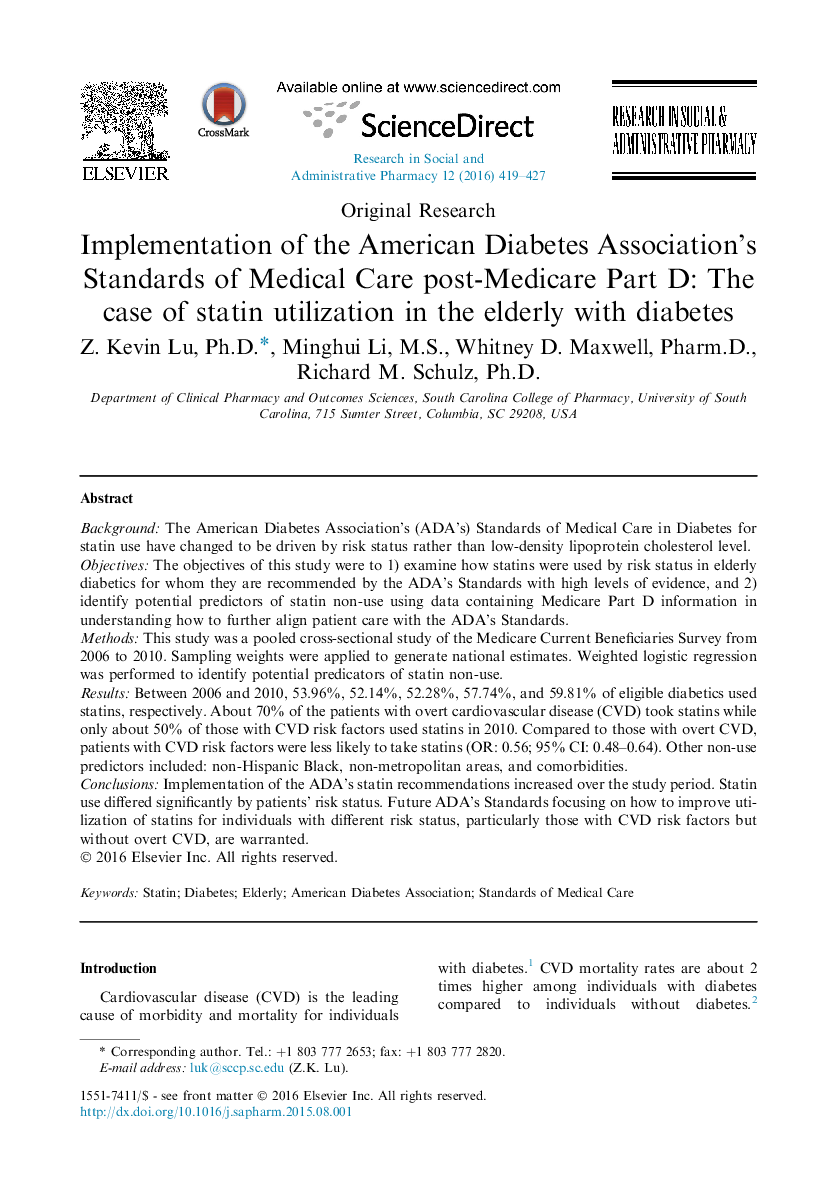| Article ID | Journal | Published Year | Pages | File Type |
|---|---|---|---|---|
| 2508186 | Research in Social and Administrative Pharmacy | 2016 | 9 Pages |
BackgroundThe American Diabetes Association's (ADA's) Standards of Medical Care in Diabetes for statin use have changed to be driven by risk status rather than low-density lipoprotein cholesterol level.ObjectivesThe objectives of this study were to 1) examine how statins were used by risk status in elderly diabetics for whom they are recommended by the ADA's Standards with high levels of evidence, and 2) identify potential predictors of statin non-use using data containing Medicare Part D information in understanding how to further align patient care with the ADA's Standards.MethodsThis study was a pooled cross-sectional study of the Medicare Current Beneficiaries Survey from 2006 to 2010. Sampling weights were applied to generate national estimates. Weighted logistic regression was performed to identify potential predicators of statin non-use.ResultsBetween 2006 and 2010, 53.96%, 52.14%, 52.28%, 57.74%, and 59.81% of eligible diabetics used statins, respectively. About 70% of the patients with overt cardiovascular disease (CVD) took statins while only about 50% of those with CVD risk factors used statins in 2010. Compared to those with overt CVD, patients with CVD risk factors were less likely to take statins (OR: 0.56; 95% CI: 0.48–0.64). Other non-use predictors included: non-Hispanic Black, non-metropolitan areas, and comorbidities.ConclusionsImplementation of the ADA's statin recommendations increased over the study period. Statin use differed significantly by patients' risk status. Future ADA's Standards focusing on how to improve utilization of statins for individuals with different risk status, particularly those with CVD risk factors but without overt CVD, are warranted.
